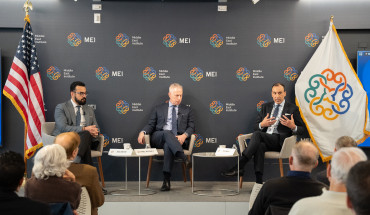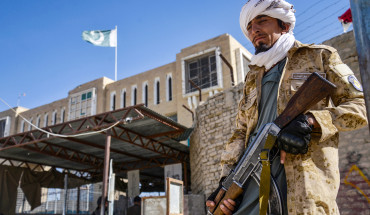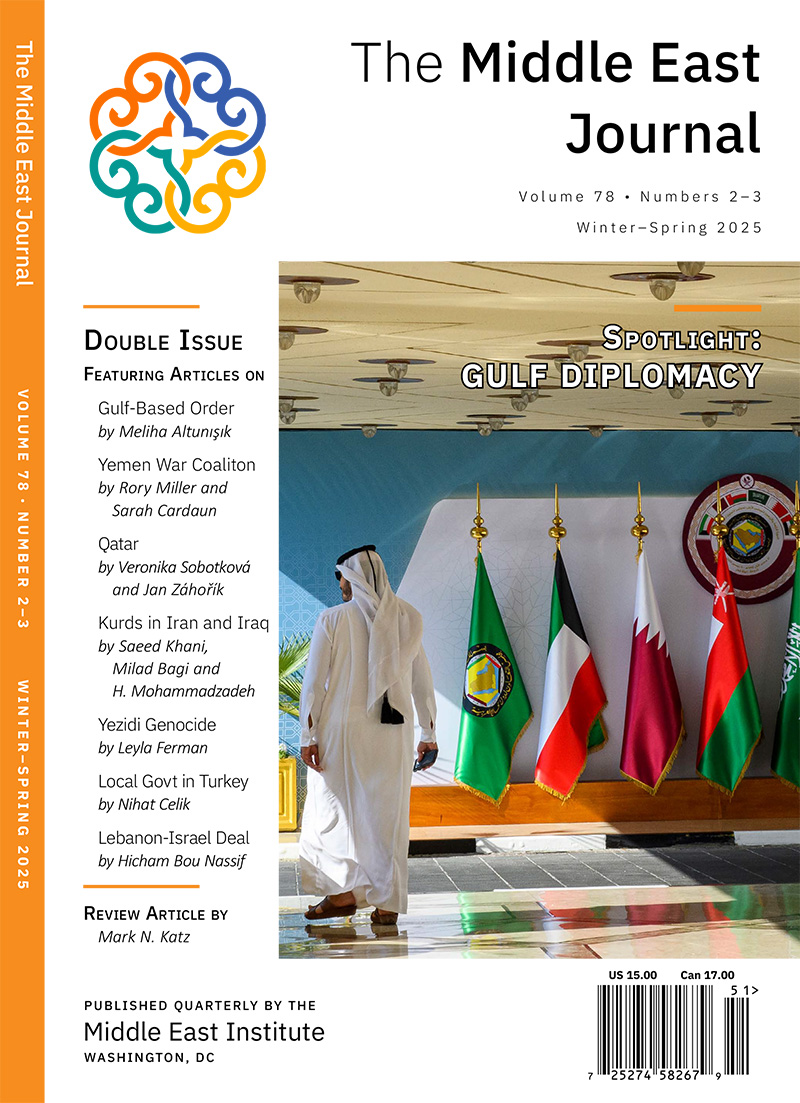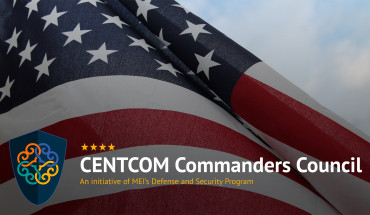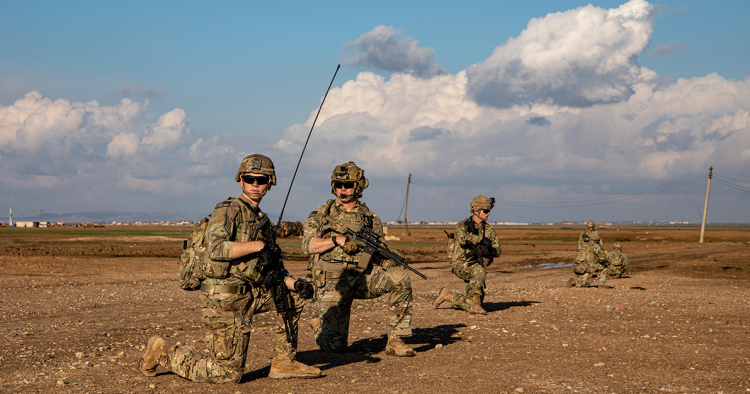On October 18, forces from the Global Coalition to Defeat ISIS carried out a joint operation with the Syrian government against the Islamic State in the city of al-Dumayr, located in the Damascus countryside. The operation, which began at 2 am, resulted in the arrest of Ahmad Abdullah al-Masoud al-Badri, a Syrian national and one of ISIS’s senior leaders. Badri, born in 1978, had been hiding in the Syrian desert since 2017, frequently moving between Palmyra, al-Sukhna, and the desert regions bordering Iraq, according to information obtained by the authors. Following the fall of the Syrian regime in December 2024, he returned to al-Dumayr, his hometown.
The joint al-Dumayr operation was the fifth instance of coordination between the coalition and the Syrian government to confront ISIS, amid Western calls for Damascus to officially join the effort to tackle the most serious international security threat since 2014. Although it already faces a number of other complex security issues, the Syrian government came to the conclusion — indeed, the conviction — that joining the coalition is the best way to achieve its desired political, military, and economic objectives.
Some politicians in Washington have linked the lifting of sanctions on Syria to its entry into the international coalition, while the Syrian government sees its accession as conditional upon sanctions relief. This divergence in perspectives between the parties raises the question of who will take the first serious step to end the ongoing stalemate, and what risks the absence of such a step could pose to international efforts to stabilize Syria as well as to regional and global security more broadly, should negotiations collapse.
Historical background
The establishment of the United States-led Global Coalition to Defeat ISIS in September 2014 marked a decisive turning point in the course of the Syrian war, as it imposed a military reality beyond the control of President Bashar al-Assad’s regime. The coalition adopted a dual strategy: conducting precise airstrikes and empowering a local partner in the form of the Syrian Democratic Forces (SDF). This partnership led to the elimination of ISIS’s “territorial caliphate” in March 2019 but left Damascus outside the decision-making framework.
Throughout that period, the relationship between the Syrian regime and the coalition was characterized by public hostility and implicit pragmatism. While Damascus publicly denounced the coalition as an “attack on sovereignty,” in reality it benefited from the weakening of a mutual adversary, allowing it to focus its efforts against other opposition factions. This dynamic created a state of “hostile coexistence,” where unofficial channels were activated to avoid direct confrontation despite the continued political and media antagonism.
With the fall of the Assad regime in December 2024 and the emergence of the transitional government, the landscape changed dramatically. The coalition was no longer viewed as a foreign intervention force but rather as a potential partner in rebuilding state institutions and combating terrorism within a broader and more inclusive framework. The new government established the National Counterterrorism Directorate and announced its readiness to cooperate with international partners in dismantling security threats, marking a clear break from the previous regime’s use of the terrorism issue as an instrument of domestic repression.
In this context, the role of Hay’at Tahrir al-Sham (HTS) emerged as a symbol of the ongoing transformation — not only as the dominant power in the north but also as a bridge between two eras. The controversy that followed the killing of ISIS leader Abu Bakr al-Baghdadi in Idlib in 2019 in HTS-controlled territory, followed by the assassination of his successor Abu al-Hassan al-Hashimi al-Qurayshi, and later the internal splits that culminated in the ousting of the senior figure Abu Mariya al-Qahtani on charges of “espionage,” solidified the rise of a pragmatic current led by Ahmed al-Sharaa, who went from leading an armed faction to becoming the head of the transitional government, reflecting the broader shift from a logic of factions to a project of statehood.
Syrian motives
In the second half of September, a number of senior officials from the Syrian ministries of defense and interior convened in the capital, Damascus. According to a Syrian security source, the meeting lasted several hours and focused on the issue of Syria’s accession to the international coalition — the potential gains it would bring and the obstacles that could arise, both domestically and externally.
The attendees agreed on the need to accelerate the process of joining the coalition and to take concrete steps toward active participation, rather than passively coordinating in a way that excludes Syrian forces from joining in coalition-led operations against ISIS leaders and cells. The officials emphasized that the Syrian government already possesses extensive experience in countering ISIS, particularly in Idlib province over recent years.
The meeting also discussed the idea of establishing a high-security prison in Syrian government-controlled areas to hold senior ISIS leaders and operatives — to be jointly administered with the coalition during an initial transitional phase.
Damascus views joining the international coalition as beneficial on several levels:
-
Politically, it would gain international legitimacy as a partner in the regional war on terror, thereby improving its classification and removing the Syrian government from terrorism-related lists.
-
Militarily, it would obtain technical and operational support from the United States and coalition countries for active participation in joint military operations.
-
Strategically, it would undermine the SDF’s exclusive status as the coalition’s official partner in Syria, thereby weakening its leverage in negotiations with the Syrian government.
-
In terms of intelligence, Syria would gain access to coalition information-sharing systems, particularly for vetting new recruits within the ministries of defense and interior to prevent infiltration by ISIS elements into the Syrian state apparatus.
According to a senior source within the General Security Directorate, the most recent coordination with coalition leadership included multiple operational agreements, most notably:
-
Intelligence sharing between the Ministry of the Interior’s reconnaissance unit and the coalition’s operations rooms.
-
Reduction of airborne raids, with field operations instead assigned to the Ministry of the Interior’s counterterrorism forces.
-
Collaboration on al-Hol camp, aimed at reintegrating Syrian families into their original communities.
-
The establishment of military communication channels between the Syrian Ministry of Defense and the forces at al-Tanf — now integrated into the new Syrian army — while maintaining direct coordination with the US Department of Defense through a field liaison cell in the Syrian desert.
Core obstacles
Damascus is well aware there are internal obstacles that pose significant challenges to joining the coalition. Chief among these is that the Ministry of Defense remains in a formative stage of its institutional development. The process of army recruitment still suffers from limited capacity to conduct proper background checks on new entrants and from an overall weakness in military capabilities.
These structural challenges make it difficult for the coalition to fully trust the Ministry of Defense’s ability to conduct joint operations. This reality is evident on the ground, as coordination currently takes place primarily between the coalition and the Ministry of Interior rather than the Ministry of Defense.
Another key obstacle is the lack of agreement with the SDF. It remains difficult to carry out separate operations and conduct multi-layered coordination with different forces that are experiencing tensions and operating within overlapping geographic areas.
Syria watchers in Washington remain cautious as well. Several former US officials believe that Syria’s formal entry into the coalition will not be possible before resolving the status of the SDF and integrating it fully into the institutions of the new Syrian state. SDF Commander Mazloum Abdi recently stated that Damascus “seeks to benefit from the SDF’s expertise” and that Syria’s participation in the anti-ISIS fight may happen “soon.” He also noted that Washington “proposed forming a joint force,” a pitch the SDF had accepted in an effort to make the fight against ISIS “national and comprehensive.”
According to information from a Western source, the debate is not confined to Washington’s corridors. There are also ongoing discussions about the Syrian government’s ability to ensure that intelligence shared between Damascus and the coalition does not leak to extremist factions within the Syrian army or public security institutions — particularly given the continued presence of foreign fighters in Syrian governmental and military ranks. Western observers see an urgent need for Damascus to restructure its army and remove foreign elements from sensitive positions that could compromise cooperation with the coalition. There are still top officials within the Trump administration and other members of the coalition who have concerns about the new government in Damascus and worry that it has not fully shed its violent extremism past.
The current structure of cooperation through the Ministry of Interior rather than the Ministry of Defense constitutes a temporary obstacle to Syria’s formal inclusion within the coalition’s framework, which typically depends on direct military coordination. This overlap between security and bureaucratic considerations makes Syria’s political path to joining the coalition contingent upon reorganizing the relationship between its two ministries and on Washington’s readiness to open broader institutional channels.
Reality on the ground and ISIS’s new strategy
Throughout 2025, it became clear that ISIS had grown from mere remnants of sleeper cells into a small, flexible network seeking to exploit the security chaos that followed the fall of the Assad regime to reestablish its presence in eastern Syria. Field sources in Deir ez-Zor and the Syrian desert indicate a noticeable surge in ISIS activity between June and October, particularly around al-Busayrah, Jabal al-Bishri, and al-Sukhna, where its units carried out night ambushes and planted improvised explosive devices targeting patrols belonging to both the SDF and government forces.
Local security sources estimate the number of active ISIS fighters to be between 2,500 and 3,000, operating in groups of no more than 10 individuals who rely on speed and frequent movement to evade aerial surveillance.
Conversely, the recent period has witnessed a notable increase in joint operations carried out by the coalition and the Syrian government, most prominently a raid conducted by the coalition — with coordination and support from government forces — on August 20, 2025, during which a senior Iraqi ISIS leader and member of its delegate committee, Salah Nouman al-Jubouri, was killed.
A Syrian government official told the authors that “coordination with the coalition has proven effective in containing the organization’s activity, but it remains limited in operational scope.”
Meanwhile, reports point to ISIS reactivating its sleeper cells in al-Hol camp and around Palmyra, focusing on recruitment efforts through prisons and displacement camps, while financing its operations via the black market. According to field observers, these developments reflect a shift toward a strategy of “flexible dormancy” — one centered on endurance and disruption rather than territorial control. This represents an early test for the new Syrian state and its partnership with the anti-ISIS coalition in managing the country’s most dangerous post-war security challenge.
Possible scenarios moving forward
The evolving dynamics of counterterrorism cooperation between Syria and the coalition open several potential pathways for the period ahead. Each scenario carries distinct political, security, and strategic implications, both for the stability of Syria and for the broader regional effort to eradicate ISIS.
1. Syria’s accession — the most likely scenario
Syria’s formal entry into the coalition appears the most probable outcome, given the increasing number of joint operations between the two sides — five in the past three months — as well as a shared international and Syrian desire to institutionalize cooperation. The coalition seeks to expand its operational reach on Syrian soil through an official partnership with the government to expedite the elimination of ISIS, while the Syrian government looks for political and logistical backing to confront the organization and establish stability to facilitate reconstruction and the consolidation of national sovereignty.
The ongoing US pressure to resolve the dispute between the Syrian government and the SDF should be viewed in this context: reaching an agreement between the two is a principal condition for accelerating Syria’s accession to the coalition.
Should this happen, it would help to consolidate a unified counterterrorism front, increasing the effectiveness of operations against ISIS, enhancing the legitimacy of the new Syrian government through formal international cooperation, improving intelligence sharing and operational coordination, reducing duplication and gaps, and creating a foundation for broader post-conflict stabilization and reconstruction support. However, this path will not be easy as there could be political sensitivities within Syria regarding sovereignty and foreign involvement, as well as resistance from internal elements that oppose cooperation with Western powers. Both Damascus and the coalition may have to take steps to pave the way and ease the concerns of each side.
2. Continued coordination without formal accession
If a comprehensive agreement remains elusive, cooperation may continue informally. Such ongoing coordination could serve as a test of mutual seriousness but carries risks if prolonged — particularly delays in operations due to cautious coordination, limited information-sharing mechanisms, and possible misunderstandings that could erode trust.
Such an approach may maintain flexibility in coordination without the political costs of formal accession and allow for the continuation of limited joint efforts against ISIS, sustaining some operational momentum. However, this scenario also has potential negative implications for international efforts against ISIS, such as inefficiency and slower response times due to informal arrangements, lack of clear accountability and binding commitments, a greater risk of operational friction. It could additionally result in limited political and reconstruction benefits for Syria.
3. Collapse of coordination
A complete breakdown in coordination would effectively bring things back to square one. The Syrian government would find itself unable to carry out large-scale operations against ISIS, as several regions where the coalition and its Syrian partner, the SDF, are active remain outside government control.
At the same time, the coalition would remain incapable of achieving a decisive victory against ISIS, given the internal divisions within Syria and the fragmented territorial control — conditions that would create security gaps the organization could exploit to reestablish its presence and power on Syrian soil. Were this to happen, ISIS could leverage these gaps to regroup, revive, and grow stronger. This scenario would leave Syria unstable and make it difficult to attract international investment and reconstruction assistance.
4. Unilateral action
This scenario could materialize if coordination efforts and accession talks collapse entirely. Were that to happen, the situation would revert to what previously existed in Idlib, where HTS conducted unilateral operations against ISIS cells while the coalition carried out separate operations east of the Euphrates. Such fragmented efforts would prove largely ineffective, given the absence of intelligence sharing and limited operational freedom across broad areas — conditions ISIS has repeatedly shown an ability to exploit, adapting quickly to environments marked by disorder and fragmentation.
How to ensure Damascus joins the anti-ISIS coalition
Achieving the first scenario listed above — Syria’s accession to the coalition — will require a deliberate and coordinated political effort to transform existing operational cooperation into an institutionalized partnership. Success depends on reciprocal flexibility: Western actors must accommodate Syria’s sovereignty concerns, while the new Syrian government must demonstrate a credible commitment to inclusive governance and rules-based coordination. Failure by either side to do so risks stagnation in scenario two or regression toward scenarios three and four, with grave implications for national and regional stability.
To achieve the best outcome, the US will need to maintain sustained diplomatic engagement to bridge the gap between Damascus and the SDF, make clear that it is ready to formalize cooperation frameworks that respect Syrian sovereignty, and provide technical and logistical support for integrated operations. For its part, Damascus will need to demonstrate its commitment to inclusive governance and reconciliation with Kurdish and other local forces, carry out institutional reforms ensuring transparency and coordination with international partners, and maintain operational discipline to avoid incidents that undermine trust.
Conclusion
Amid the push and pull of caution and necessity, the partnership between Damascus and the coalition is taking shape even as the memory of past hostility endures. Yet how far can this partnership go in overcoming the legacy of mistrust? Can both sides turn their tactical coordination into a stable strategic partnership? In a moment when the regional balance of power is shifting, Syria faces a new test: It must either solidify its place within an emerging international security framework or leave the vacuum for others to fill.
Samer al-Ahmed is a Syrian journalist and researcher who focuses on developments in northeastern Syria. He holds a master’s degree in international relations and has written multiple reports and research papers for Arab and international centers. You can follow him on Twitter @sameralahmadnq.
Subhi Franjieh is a Syrian journalist and researcher who focuses on political and security developments in Syria. He holds a degree in English Language and Literature, and he has contributed multiple reports and research papers to Arab and international institutions. You can follow him on Twitter @SUBHIFRANJIEH.
US Army photo by Sgt. Julio Hernandez courtesy of CENTCOM
The Middle East Institute (MEI) is an independent, non-partisan, non-for-profit, educational organization. It does not engage in advocacy and its scholars’ opinions are their own. MEI welcomes financial donations, but retains sole editorial control over its work and its publications reflect only the authors’ views. For a listing of MEI donors, please click here.






